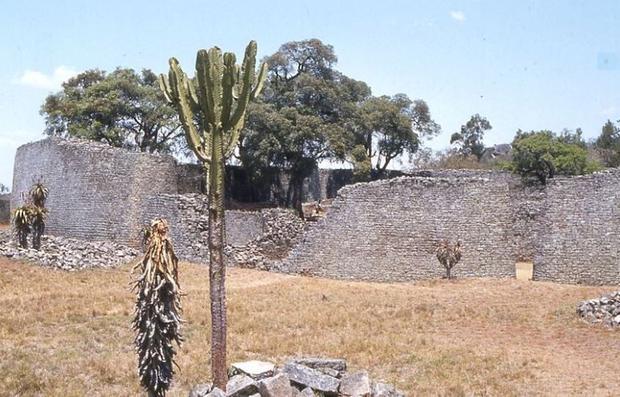The ruins form three distinctive architectural groups, the Hill Complex, the Valley Complex and the Great Enclosure. The Hill Complex is the oldest and was occupied from the 9th to the 13th centuries. The Great Enclosure was occupied from the thirteenth to fifteenth centuries and the Valley Complex from the fourteenth to sixteenth centuries.
Here is the remarkable thing about the structures, they were built using a method called dry stonewalling, which requires a high level of masonry expertise. Granite, a local and plentiful natural resource, was collected from the exposed rock in the surrounding hills. The large slabs were easy to remove, transport, and construct, creating an expansive set of walls around the complex.
Altogether, the structures are among the oldest known monuments in Southern Africa and the second oldest after nearby Mapungubwe in South Africa. And although the monument is of great national importance, much of it has been left unexcavated. “If we combine areas dug by antiquarians with those by professional archaeologists, it becomes clear that the excavated area at Great Zimbabwe is less than 2 percent,” an archaeologist tells Live Science.
The country adopted the name Zimbabwe in 1980, when after a 15-year war with black nationalist forces; this culminated in a peace agreement and declaration of sovereignty. Robert Mugabe became prime minister at that time and was elected the nation’s president in 1987. The Zimbabwe national flag and Coat of Arms features a bird on a pedestal resembling an artifact found at the Great Zimbabwe.
The early settlement and building of the Great Zimbabwe
Construction of the stone walls started in the 10th century and continued for almost three hundred years before abruptly coming to an end. The stone city covers 720-hectares (1,779 acres), and it has been suggested that up to 18,000 people could have lived there.
But here’s an interesting bit of information – Not all of the city was ever inhabited at one time. In a paper published in 2016 in the Journal of Archaeological Method and Theory, archaeologists wrote that “different parts of the city were inhabited at different times and the earliest evidence for habitation dates to around A.D. 900.”
One of the most notable artifacts found in the Hill Complex are the Zimbabwe birds. The birds were sitting on pedestals on a high balcony enclosure overlooking a formation called the Eastern Enclosure and a huge boulder in a shape similar to a bird. The Valley ruins are made up of the Upper and Lower Valley complexes. The two areas show signs of habitation at different periods of time.
The biggest and most formidable structure in the city is the Great Enclosure. It has walls that rise up 11 meters (36 feet), extending almost 250 meters (820 feet), making it the largest ancient structure south of the Sahara Desert.
It has ben suggested that based on where artifacts were discovered, there may be an explanation for the different complexes. One theory suggests the Hill complex was used for religious purposes, as this is where the birds were found. The Valley complexes were the area where the common people lived and the Great Enclosure was the realm of the monarchs.
But this assumption does not take into account the differences in the periods of occupation at the different sites, so that is one question that’s still unresolved. Artifacts include soapstone figurines, pottery, iron gongs, elaborately worked ivory, iron hoes, bronze spearheads, copper ingots, and gold beads, and bracelets, but not all the artifacts are from the same century.
Why was the city abandoned?
Like it is with our study of many civilizations, there are still many gaps in the Great Zimbabwe story. With only a small percentage of the site explored, a full history of what transpired to lead to the city being abandoned is still unknown. There is speculation that the people were overpowered by an invading force, or perhaps there was a decline in local resources used for trading.
Another possibility is that there was an abrupt change in the climate, such as a prolonged drought that resulted in famine and a loss of water resources, forcing people to move to a location where water and arable land was more plentiful. Maybe one day, we will find out what happened, but until that time, Great Zimbabwe is still a magnificent place to visit.-digitaljournal.com












